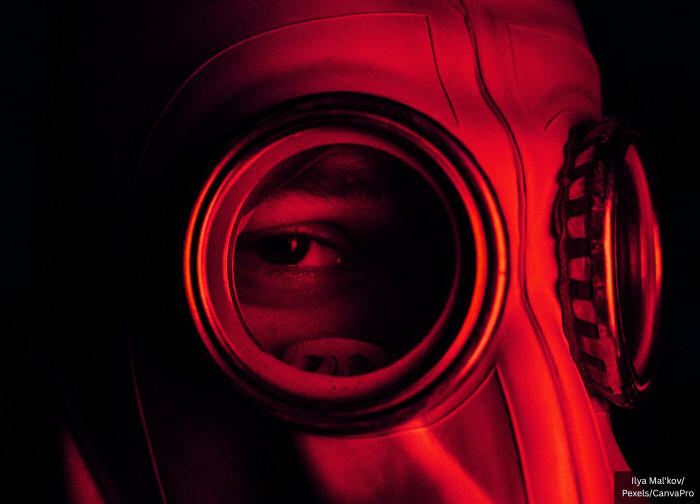|
Thousands of BSL-3 labs worldwide now handle pathogens like bird flu, SARS-CoV-2, and tuberculosis with almost "no oversight," biosecurity experts confirm...
Strikingly, a May 2025 Journal of Public Health study (Mapping biosafety level 3 (BSL-3) and BSL-4 laboratories for public health threats reduction) found that more than 90% of the countries with at least one BSL-3 laboratory lacked oversight or regulation of dual-use research of concern.
Dual-use research refers to experiments that can be used for good (e.g., alleged drug development) but also for harm (e.g., creating a bioweapon).
The Journal of Public Health study aimed to investigate the worldwide distribution of BSL-3 and BSL-4 laboratories.
Alarmingly, it found that:
BSL-3 laboratories work with serious or potentially lethal pathogens that can be transmitted through the air and usually have available treatments or preventions, such as, BSL-4 laboratories handle the most dangerous and exotic pathogens that often cause fatal diseases with no available vaccines or treatments, such as,
Taken together, the proliferation of BSL-3 and BSL-4 labs around the world raises national security, informed consent, and conflict of interest concerns.
Even former NIAID Director Anthony Fauci - who dismissed claims that a lab leak caused the COVID 'pandemic' - has admitted in print that the greatest biosecurity threat regarding dangerous pathogen research is laboratory,
Given the mounting evidence of accidents, secrecy, and conflicts of interest, the continued operation of these bioweapons labs poses an unacceptable threat to humanity's safety.
The only responsible course is to shut down all BSL-4 facilities worldwide and impose a global moratorium on high-risk pathogen experiments in order to prevent further catastrophe.
But governments all over the world are doing the opposite.
The Journal of Public Health authors warn in their conclusion:
Dr. Richard Bartlett warned that COVID-19 resulted from dangerous lab experiments and urged a global ban on bioweapons, calling the unchecked spread of BSL-3 and BSL-4 labs - where such pathogens are made - an existential threat to humanity.
Worldwide Surge of Bioweapons Labs
Before the COVID 'pandemic', only a modest number of BSL-4 labs existed worldwide.
Mapping studies published earlier this year show there are now more than 100 operational BSL-4 labs across 34 countries. Researchers identified a staggering 3,515 BSL-3 laboratories in 149 countries.
They write in their Journal of Public Health publication:
India's Ambitious ExpansionIn India, the Defence Research & Development Establishment (DRDE) in Gwalior inaugurated a BSL-4 facility in November 2024, aimed at experimenting with Nipah virus and Crimean‑Congo hemorrhagic fever virus.
Additional high-containment labs are planned, potentially creating one of Asia's largest BSL-4 networks.
Russia's 'Sanitary Shield' and Maximum-Containment AmbitionsRussia's flagship BSL-4 facility at State Research Center of Virology and Biotechnology VECTOR (Koltsovo) is already a key part of its bio-infrastructure.
Under the national "Sanitary Shield" program, Moscow announced plans for up to 15 new "maximum-biosafety level" labs by 2024.
While not all details are public, satellite imagery and defense analysis suggest that several facilities - such as the site at Sergiev Posad‑6 near Moscow - exhibit features consistent with BSL-4 design.
United States - Updating an Already Extensive Network
The United States remains home to one of the largest portfolios of BSL-4 labs globally, with around 14 active facilities as of 2023.
These include institutions such as the Galveston National Laboratory, Boston University National Emerging Infectious Diseases Laboratories (NEIDL) and others managed by the Centers for Disease Control and Prevention (CDC).
Construction is underway for a new state-of-the-art BSL-4 laboratory at the CDC's Roybal campus in Atlanta, Georgia, as part of the CDC's 2025 Masterplan.
The new facility, called the High Containment Continuity Laboratory (HCCL), will be a 160,000-square-foot, multi-story research building designed to accommodate approximately 80 laboratory researchers.
Latin America's Entry - Brazil & Argentina
In Brazil, the Brazilian Center for Research in Energy and Materials (CNPEM) broke ground in 2024 on a proposed BSL-4 complex dubbed "Orion," to be integrated with the country's Sirius synchrotron light-source.
If realized, it would become South America's most advanced high-containment biology facility.
In Argentina this month, the Malbrán Institute in Buenos Aires opened the country's first BSL-4 lab.
As an international hub for migratory birds traveling between the Northern and Southern Hemispheres, Argentina's position makes it a strategic focal point in the global network of avian flu surveillance and experimentation - placing it squarely within the larger international orchestration of a potential bird flu pandemic currently underway.
Bottom Line
The global explosion of BSL-4 laboratories represents not progress, but peril.
What governments call "pandemic preparedness" has become an uncontrolled arms race in bioweapon capability, with more than 110 BSL-4 labs now operating across 34 countries - most in nations that have no enforceable oversight of dual-use research.
The same systems meant to prevent pandemics are engineering the conditions that could ignite the next one.
With over 90% of countries hosting BSL-3 labs lacking any regulation of dual-use research, humanity is effectively,
These facilities have already demonstrated,
Given this reality, nothing short of a global moratorium on high-risk pathogen research and the immediate closure of all BSL-4 laboratories can protect public safety.
The question is no longer if another lab-engineered outbreak will occur, but how many more chances we are willing to give it to happen again...
|





